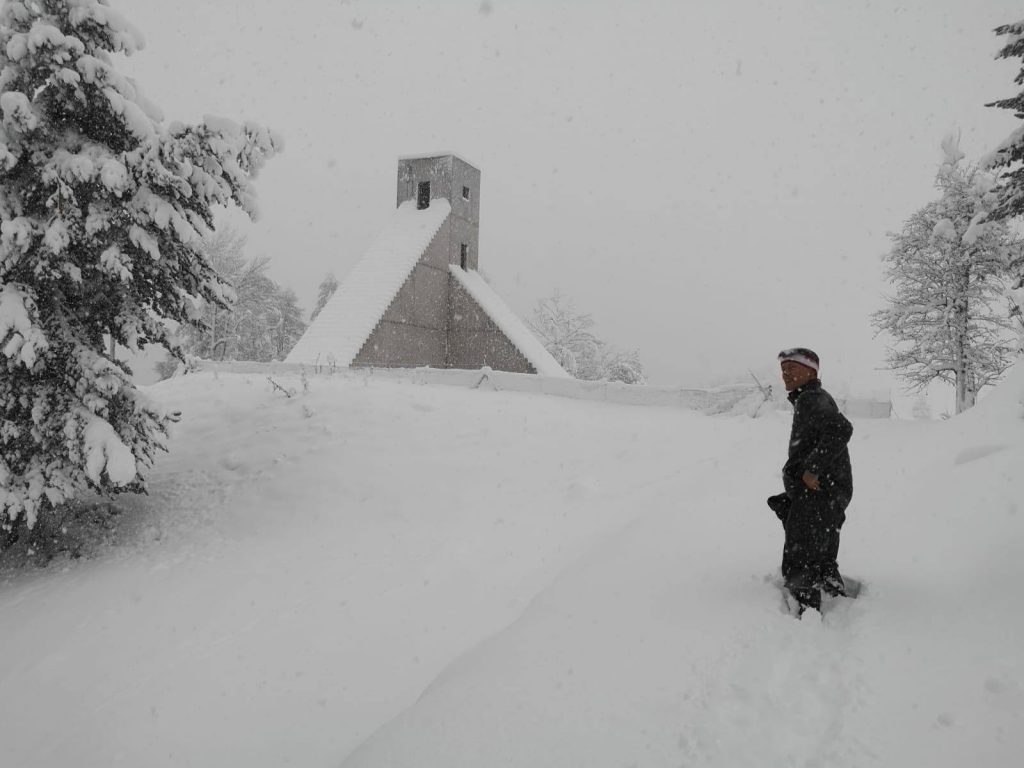Part Two: Jonathan Caron — “You can work in sugar and pine needles”
April 21, 2022
Many architecture students dream of working at famous international architecture offices. This four-part series tells the stories of three students from the Azrieli School of Architecture & Urbanism who landed at high-profile firms and the insights and opportunities they gained from their experiences.
In October 2020, Jonathan Caron found himself staying in an 11th– century castle in the Swiss Alps. He had completed his Bachelor of Architectural Studies at Carleton that spring and spent the summer working at Herzog & de Meuron in Basel, Switzerland.
Caron went on to work as an assistant to the Swiss-born artist Not Vital, whose diverse practice includes pieces that blend architecture and sculpture. Here are some highlights of Caron’s 10 months with Vital, as told to Maria Cook.
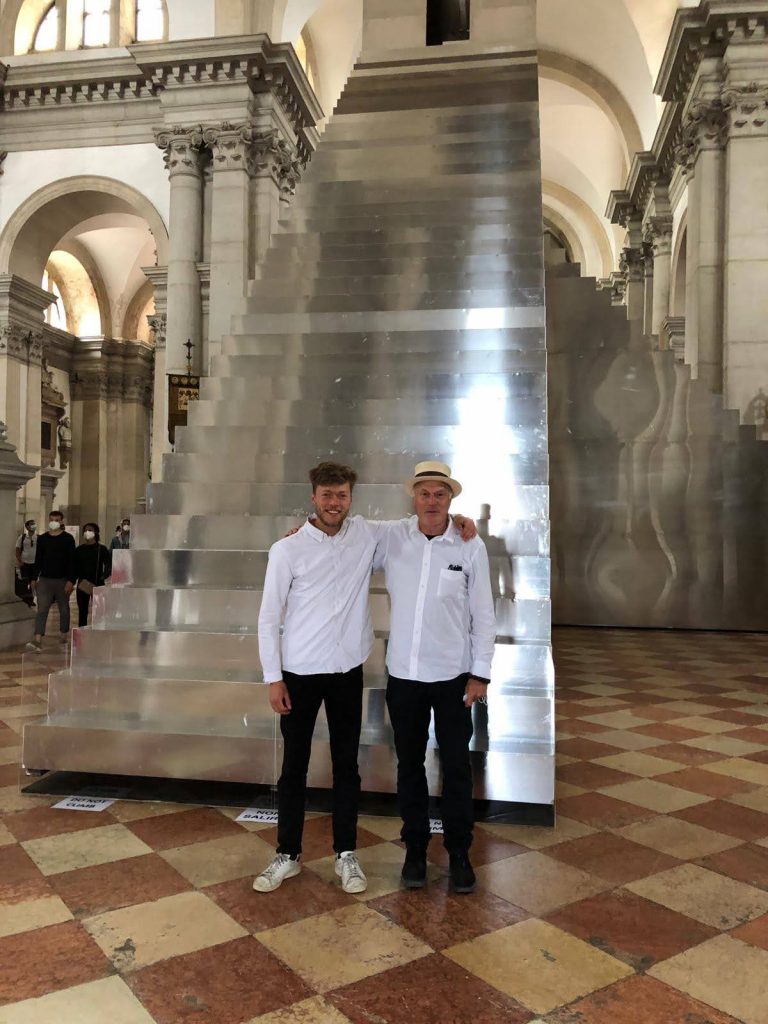
Jonathan Caron (L) with Not Vital (R) at the Basilica of San Giorgio Maggiore in Venice, Italy. Image: Courtesy of Jonathan Caron
I had a strong feeling when I started at Herzog & de Meuron that I wouldn’t go straight to my master’s. It was too late to apply, and the pandemic was still strong.
I thought maybe now is a good time to do something a little crazier. Maybe this was the moment to learn from a carpenter or sculptor, or even a baker!
I would have this discussion with everyone I met to see if they had any idea of what I might do or if they knew anyone. A friend said do you know the artist Not Vital?
As soon as I googled him and saw the images, it blew my mind. He works around the globe with every kind of material and scale. That was super intriguing.
I sent my portfolio. Two weeks later, when I didn’t hear anything back, I reached out. The assistant told me, ‘Not is currently organizing two exhibitions. Don’t worry; your portfolio is printed ready for him to look at.’
I looked at his website to see where the vernissage was, and I decided to go spontaneously. It was about five hours by train in Ardez, a village in the Engadin Valley. I managed to get a hold of him. I guess he had already looked at my portfolio because he looked at me and said, ‘Oh yes, you worked at Herzog & de Meuron, right?’ He invited me for a walk the following month, in August 2020.
Soon after, Caron was offered a job and a place to live.
Planta House is a six-storey house with paintings by Tintoretto, Rembrandt, and Andy Warhol, and artwork and antiquities from all around the world. In the bathroom are solid marble bathtubs next to each other. There were skeletons, currency from Africa, gold and silver sculptures.
I stayed there for a couple of days. It was too big to be there alone. Too silent.
He agreed that I would live in same house as him two villages eastward in the village of Sent.

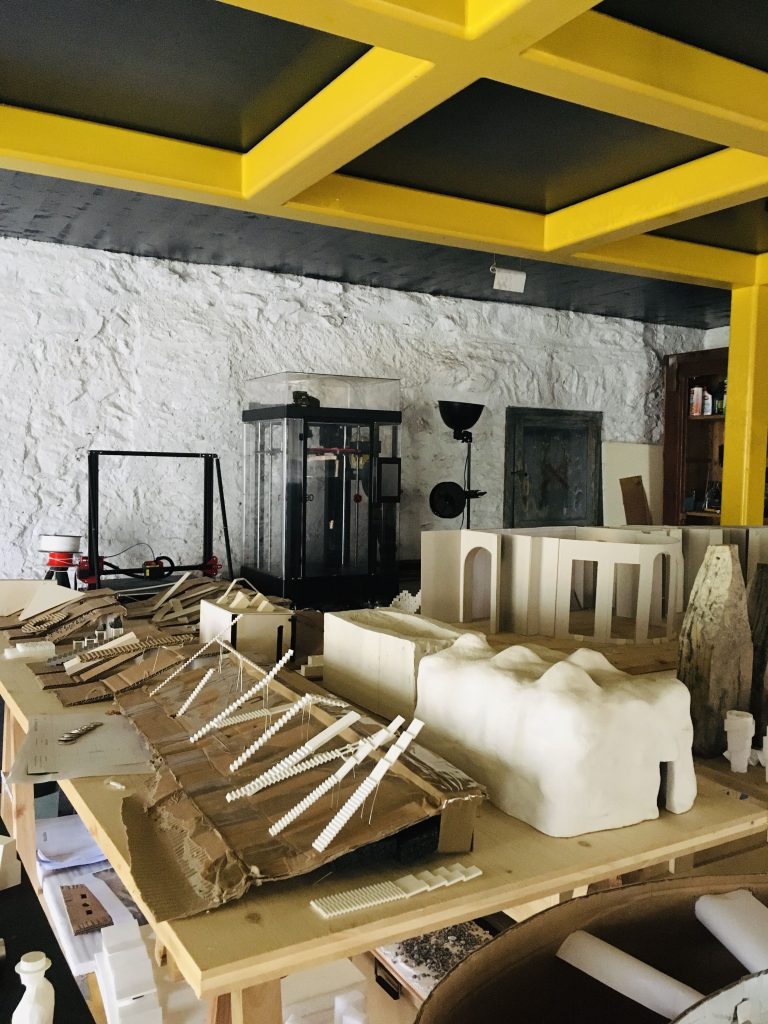

Jonathan Caron’s studio in Sent, Switzerland. Images: Courtesy of Jonathan Caron
I was always in transit between his studios, his sculpture park, and his castle. I developed pavilions, books, furniture, cutlery, stairs, bridges, sculptures, essays, installations, and exhibitions with materials ranging from gold, marble, metal, bricks to cow manure.
At first, I was mostly working on an underground pavilion for his sculpture park, which will be built this spring.
The underground pavilion had no program. That was very odd for me. How could I design something with no program? It was about being underground, a sensational experience.
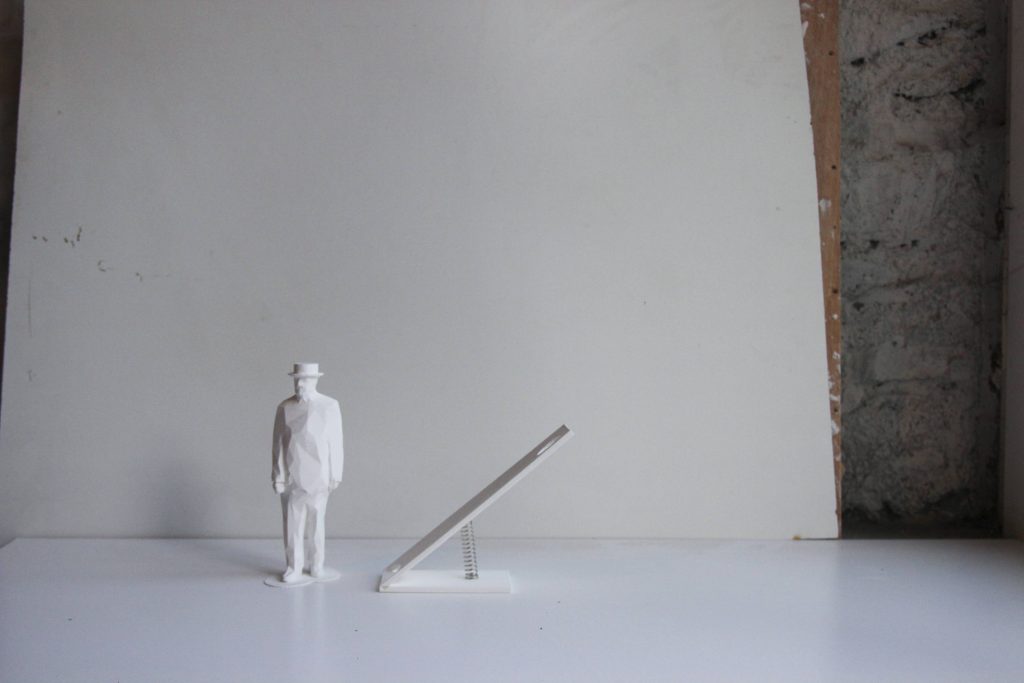
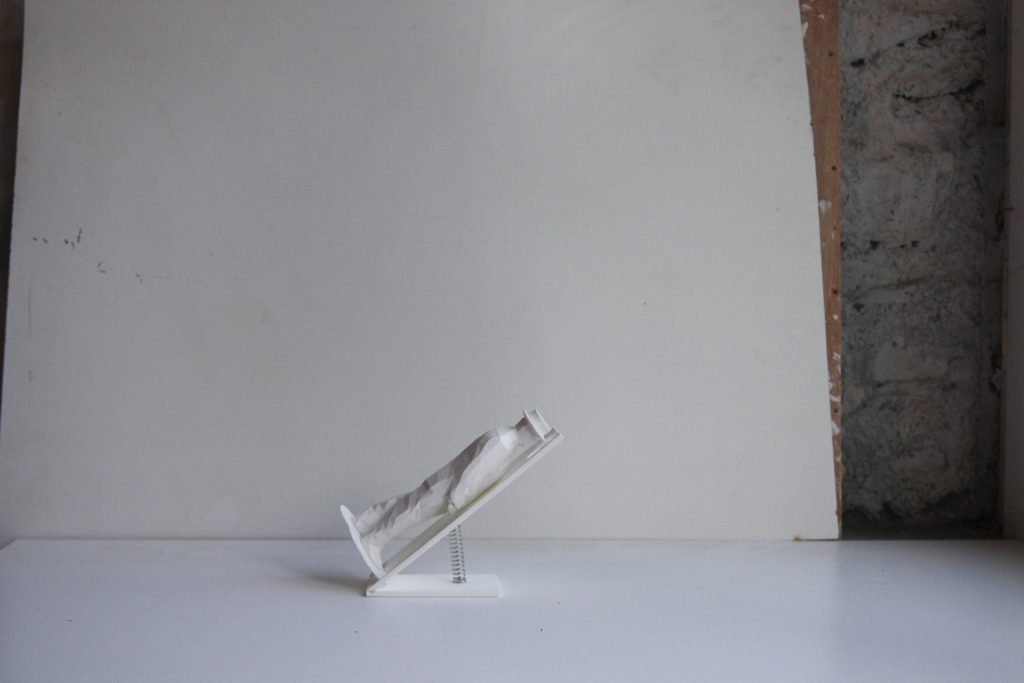
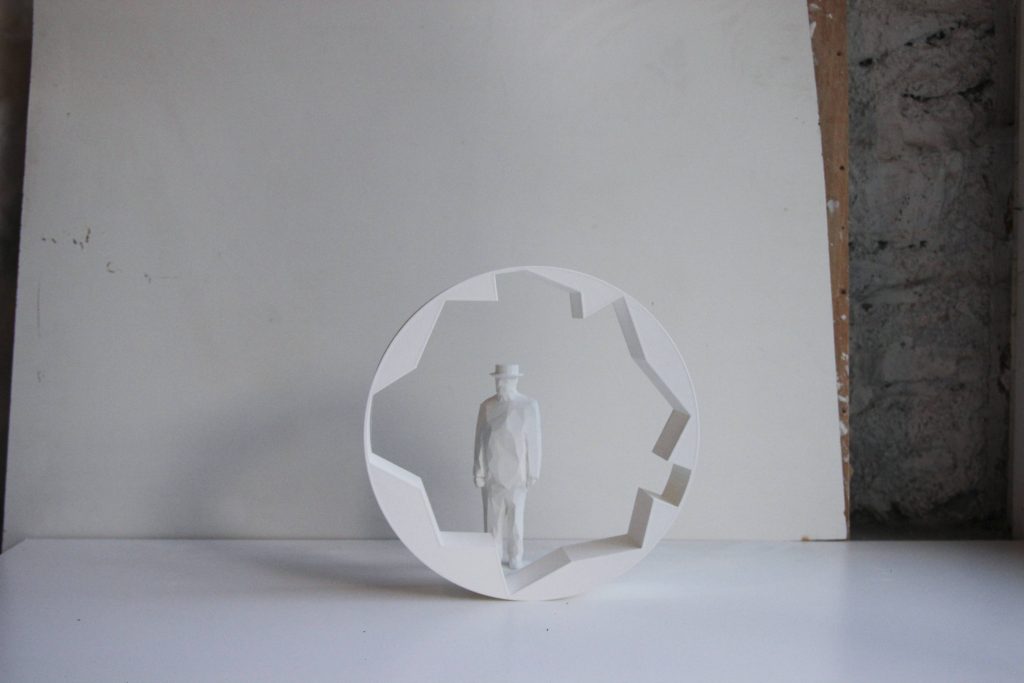
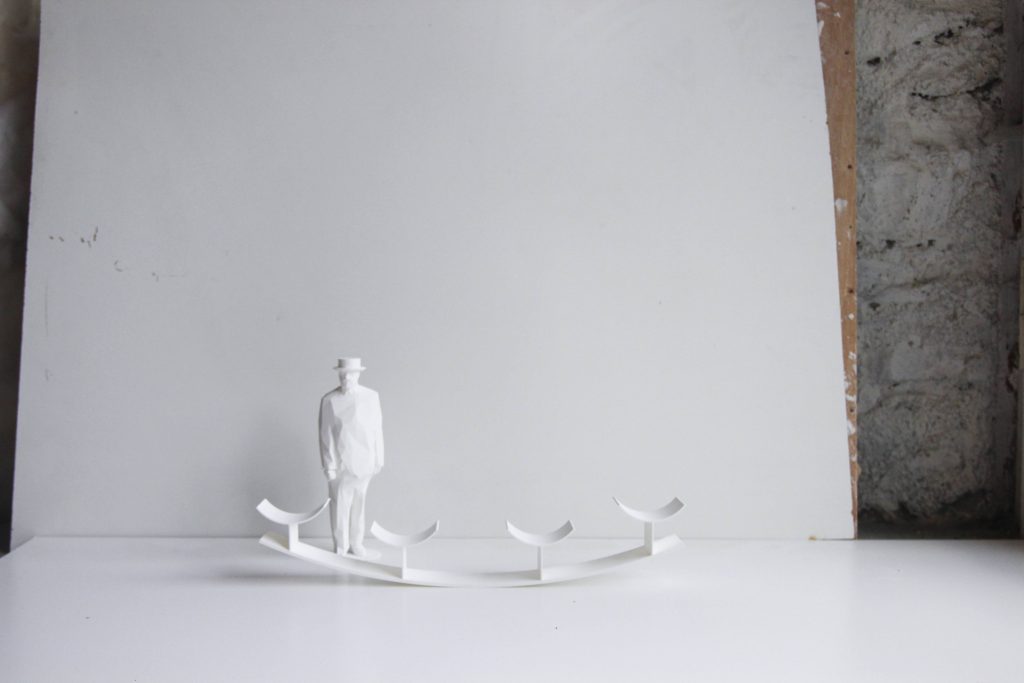
Models of furniture designs by Jonathan Caron. Images: Courtesy of Jonathan Caron
It was exactly what I wanted: to stretch my whole conception of architecture.
He would hint at things. “Design a house like Mahalia Jackson. Design a house to be happy.”
Not told me Alvar Aalto designed furniture. He asked me, ‘can you please design furniture?’
One is a two-piece chair, one to sit on and one to lean on. It looks like a house and tower combined. I said, ‘I think we should make this of solid marble.’ A week later, Not and I went to Italy to a quarry to pick the marbles.
Anything is possible with Not. It was total freedom. It doesn’t need to be put on the market. It just needs to be great. When someone asks ‘Why?’ he simply answers, ‘Not why.’
One part of the work was designing things with him. Another part was building things.
For about a month and a half, I worked with incredibly talented Swiss carpenters building multiple additions to the house. It was fantastic for me to learn from them the craft of how to make a room full of wood — walls, floor, ceiling — but never show any nails or screws.
For about two months, I worked on the restoration of this incredible ceiling in his castle. That was another trade I got to discover.
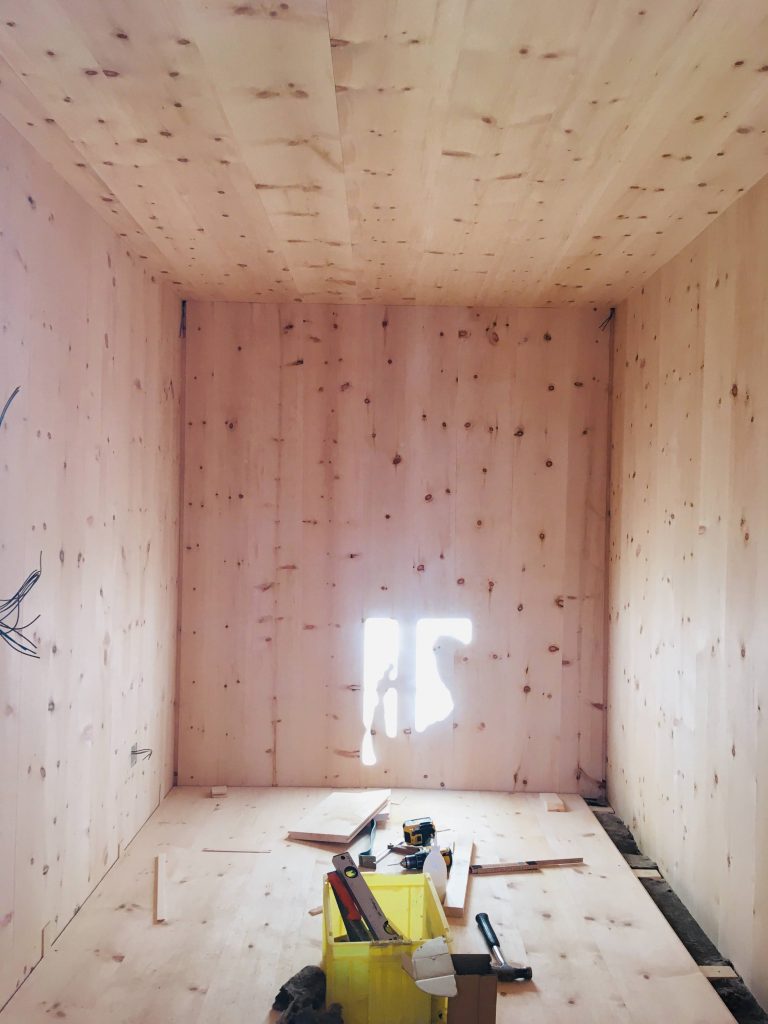
Jonathan Caron worked with Swiss carpenters building additions to Not Vital’s house. Image: Courtesy of Jonathan Caron
In preparation for the 2021 Venice Biennale in Architecture, we went to Venice. Inside the Basilica of San Giorgio Maggiore, on the island of San Giorgio Maggiore, we built a tower to watch the sunset out of steel and aluminum.
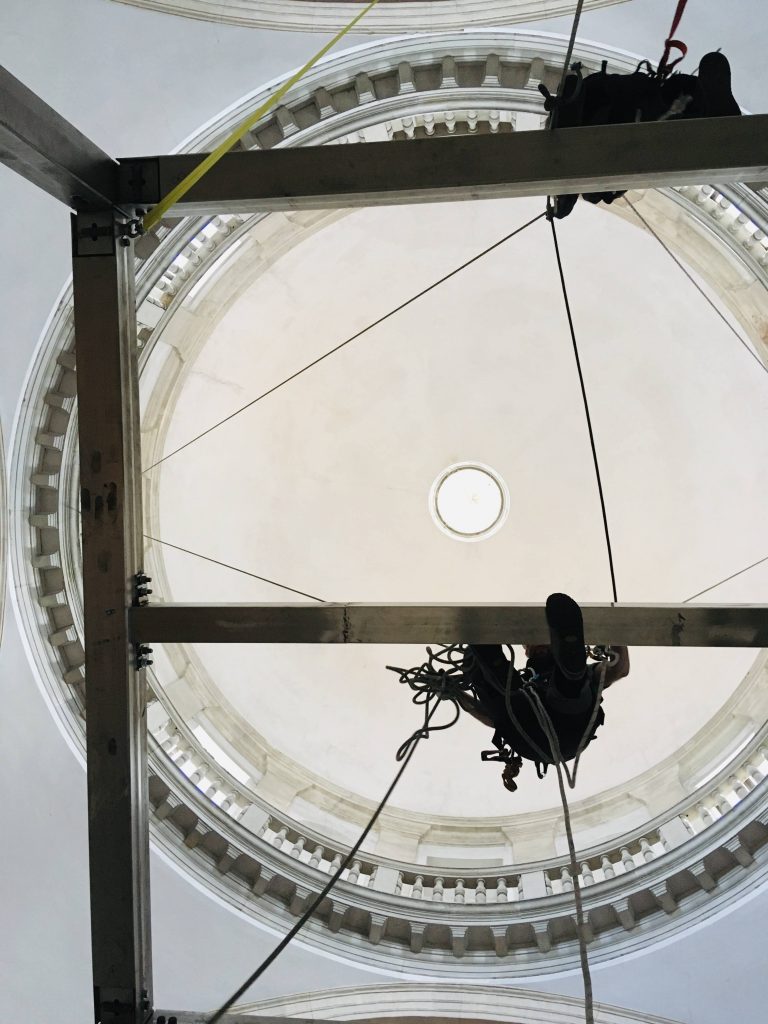
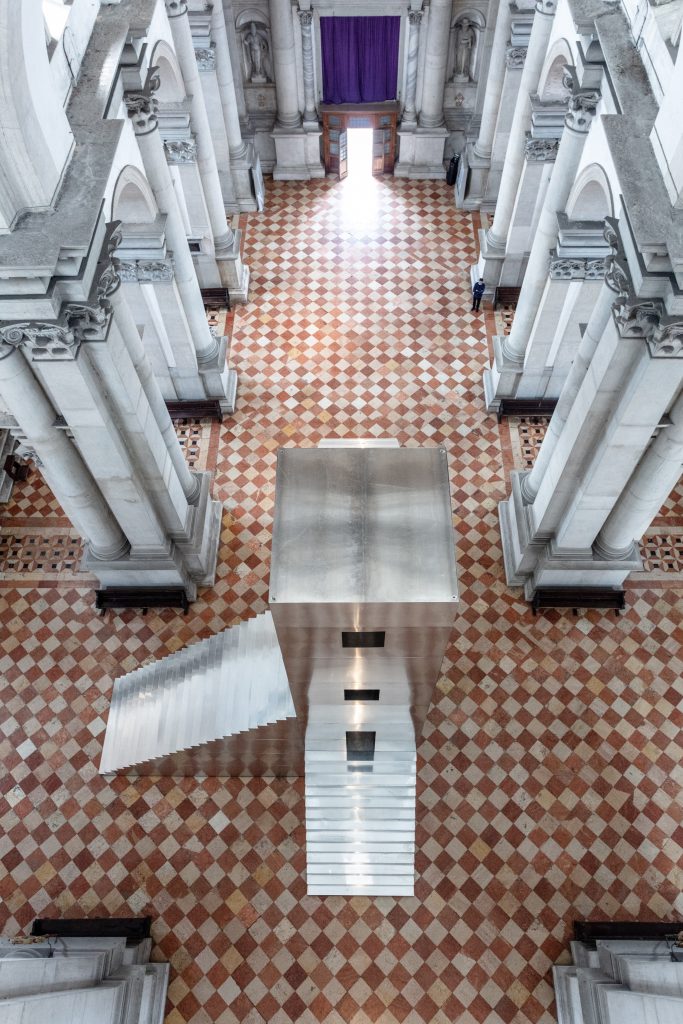

Jonathan Caron helped install House to Watch the Sunset, by Not Vital, at the Basilica of San Giorgio Maggiore for the 2021 Venice Biennale in Architecture.
Images: Courtesy of Jonathan Caron
We were in this church, designed by Andrea Palladio, secured with a harness attached to the cupola. I was one of the three people at the top assembling the plates. It was extremely heavy and dangerous at times handling the pieces and mounting everything.
This year, we will go and install it in the Kingdom of Tonga.
Another assistant lives at the house, and numerous visitors and collaborators frequently stayed over. We would be with Not the whole time. We’d eat breakfast together, talk about what we would do during the day, often have lunch, and then dinner together. It was pretty much like a family relationship.
Sometimes, in the middle of the week, instead of working, he’d go, ‘Hey Jonathan, why don’t you go skiing?’ He wanted my brain to be as fresh as possible rather than exhausted.
I’ve always been torn all my life, being half Canadian, half European. Where will I spend my life? Where will I open a practice? Should I stay in Canada?
I always thought I had to pick. With Not, I learned I don’t need to pick. I can be anywhere and everywhere. One can live in a few different places at the same time. Indeed, one of Not’s favorite poet, Ko Un, wrote ‘The world’s too vast to live in a single place, or three or four.’ It’s not about being rich. It’s about really wanting it. Not was not born rich.
We called it freie Universität. It’s constant learning.
I learned that no material is forbidden. Everything is allowed. There’s a tower he built,18 metres, totally covered with hair or out of a single block of marble. Or a house in Niger to observe the moon. A house not to go into, but only onto. With a ladder, you climb up and lie on the house to watch the moon. It questions what architecture is. Every scale is allowed. I love the fact he’s so much freer than an architect.
You don’t need to just work in concrete and steel. You can work in sugar and pine needles. This is what will make your work interesting. If you’re the only one doing these daring things, there will be a market.
Jonathan Caron is currently in the Master of Architecture program at Harvard University on a full merit scholarship. He went to Rio de Janeiro during Reading Week 2022 for a project with Not Vital and plans to return to Switzerland this summer to continue working with him.

Jonathan Caron at The Parkin, Not Vital’s sculpture park in the village of Sent, Switzerland. Image: Courtesy of Jonathan Caron

